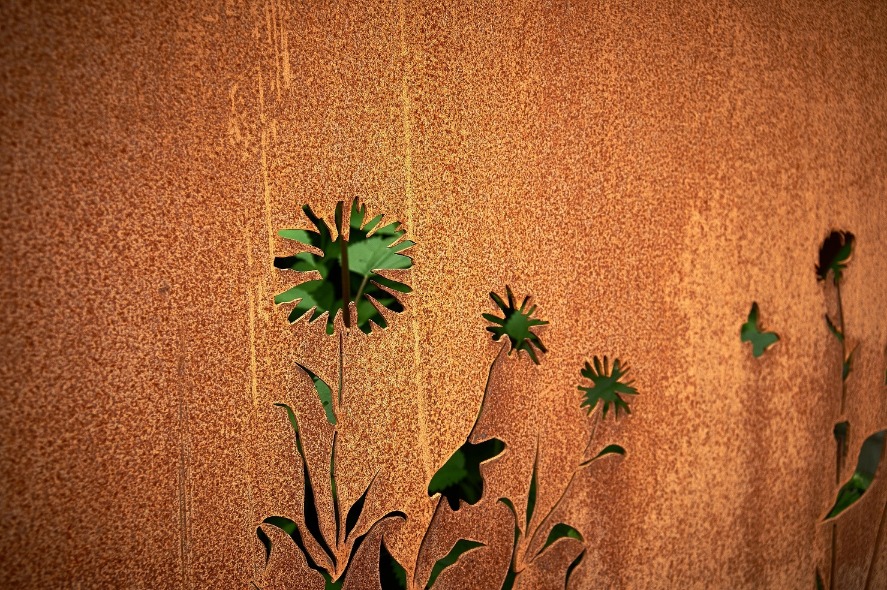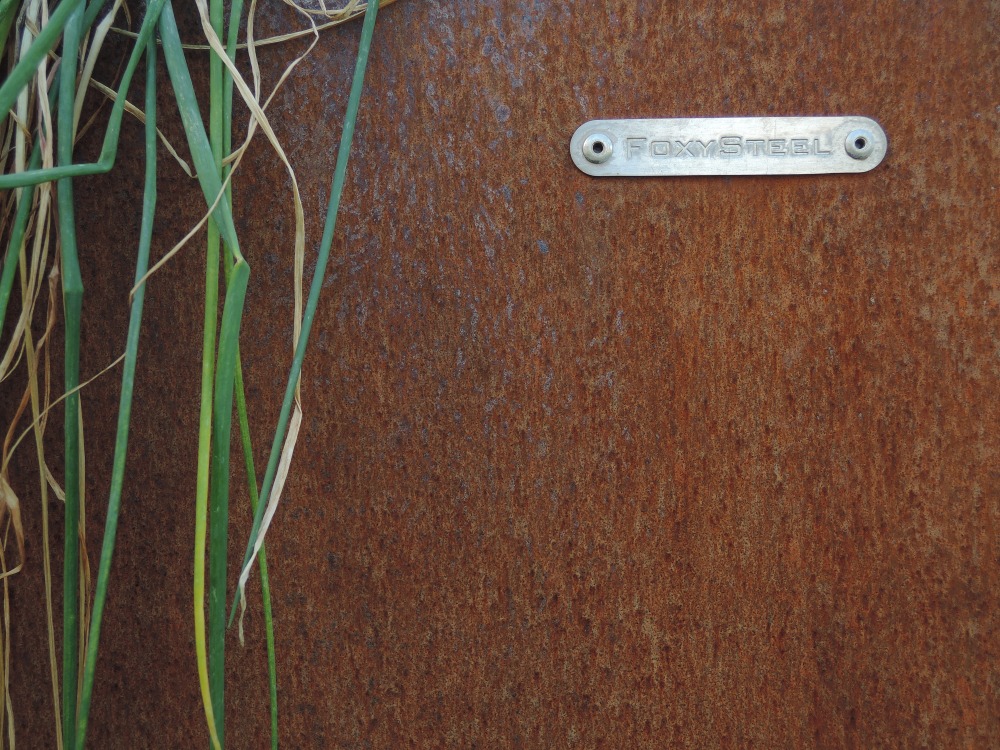Corten
The patinated steel has been known in architecture since the 1960s. Before that time, the patinated steel was used for the production of the railway wagons, which did not have to be cured with a coat of paint as protection from corrosion.
Basically, it is about the steel with increased resistance to atmospheric corrosion. There are added elements such as phosphorus, copper, chromium, nickel, molybdenum to the liquid steel during the production process, which make higher resistance of this steel. Final Corten product has lowered corrosion, we can say nearly stopped corrosion.
Material – CORTEN – becomes with the ageing process more attractive. It is very rare attribute and valuable for application in architecture. In case of mechanical defect of material Corten, the patinated steel has ability of repeated creation of its own patina at the defective places.
Corten is an authentic, natural material that is resistant to weather conditions. It develops gradually and patina on its surface gives a unique aspect with inconvertible color. No additional modification is required, it protects itself. Corten is 100% recyclable, natural and useful steel.
Material

Material
Corten is a low-alloy steel, it is optimized thanks to its alloying elements (copper, chrome, nickel and phosphorus), which it achieves extraordinary mechanical anti-corrosive properties with. We know 3 types of this steel – A, B, B-D. But we use especially Corten A for our work, which is the most suitable for application in art, design and architecture.

Corrosion resistance
Corten steel is resistant to atmospheric corrosion thanks to the protective film of patina, which is created on the surface of the material during its oxidation and it is characterized by marginal permeability of oxygen inside – which stops corrosion nearly completely. The layer of oxides forms when the steel Corten is periodically moistened and dried, which takes 18 to 36 months in normal weather conditions and in our climatic conditions.

Colour of the patina
The patina on the surface of the Corten has a brown-red fox colour at the beginning, which darkens to dark brown over time. In industrial areas, the patina layer is created faster on Corten and it is darker than in a pure rural or natural environment. In case, that the surface of the steel Corten is constantly moist or dry, the protective film of the patina would have no conditions to
form this film. An example is the interior, where this process needs to be activated artificially, or it can already be applied in a mature manner, that is, with a finished patina on the surface of the Corten.
Colour development of patina

Material Corten looks like an ordinary steel. Its unique appearance is already achieved after the launching of the corrosive processes after the application in the exterior. In case of realizations in the exterior, such as the fence, fire stoves, outdoor oven stoves, flower pots on the terrace, claddings or other forms of fencing and solutions of the facades, the material Corten is patinated – to rust in a natural way, under the influence of outdoor moisture.
In case of interior applications, it is necessary to use a special patinated FoxyPaint coating to activate the specified corrosion process on the surface of the steel Corten. Afterward, we can stabilize the artificially patinated surface of the material Corten in such a way that it does not cause further surface oxidation. We only recommend this method for interior applications.
